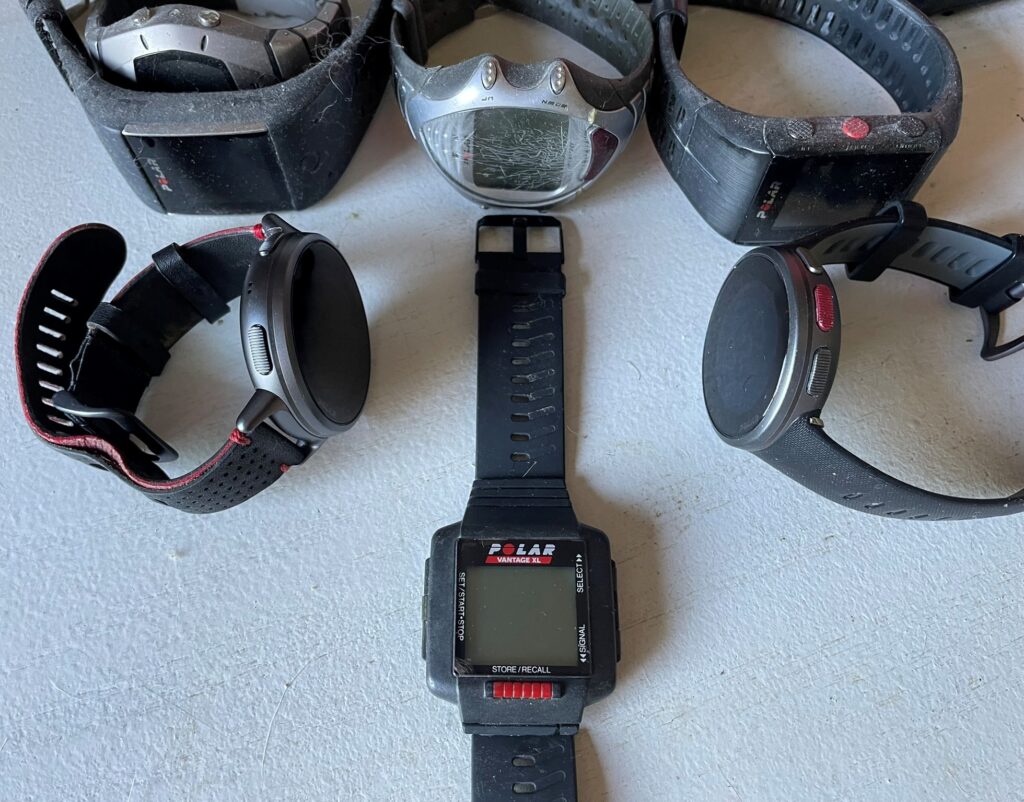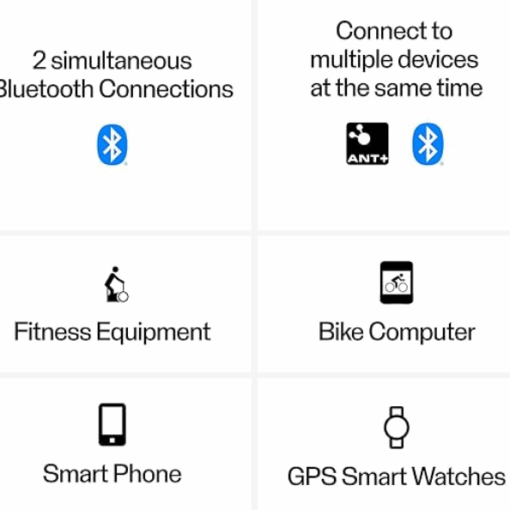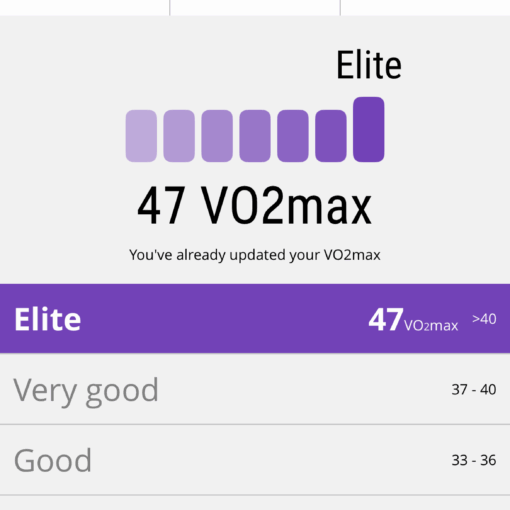Today, I am remembering my Polar Vantage XL heart rate monitor that I got 39 years ago on August 5th, 1986. I finally got a small settlement from a car accident in May 1985 and all I wanted was the Polar Vantage XL. Last evening, I was looking for something in a catch-all storage tub and found it on the very bottom, having thought that it was long lost. Scroll down so that Gemini can tell us more about it. In the image below, it has proudly taken it place with my current and previous Polar heart rate monitors.

The Granddaddy of Wearables: A Look Back at the Polar Vantage XL
In an age of always-on, GPS-enabled, blood-oxygen-sensing smartwatches that play music and order our coffee, it’s easy to forget where it all began. Before the sleek aluminum and glass of today’s wrist-worn computers, there was plastic. There were chunky buttons. And there was the undisputed king of serious athletic training: the Polar Vantage XL.
If you were a dedicated runner, cyclist, or triathlete in the mid-to-late 1990s, this device wasn’t just a gadget; it was a statement. It signaled that you were serious about your training. You didn’t just go out for a run; you executed a workout with specific, data-driven goals.
A Revolution on Your Wrist (and Chest)
Let’s get one thing straight: the Polar Vantage XL was not a smartwatch. It was a heart rate monitor, and it performed that job with singular, brilliant focus. The system came in two parts, a ritual familiar to any veteran athlete:
- The Watch: A utilitarian, robustly built timepiece with a large, clear dot-matrix LCD screen. It was big, unapologetically plastic, and designed to be legible while you were gasping for air on a hill repeat.
- The Chest Strap: The iconic T31 coded transmitter. Before wrist-based optical sensors became the norm, this was the gold standard. You’d moisten the electrodes, strap it around your chest, and it would wirelessly (a marvel at the time!) transmit your heart rate data to the watch with rock-solid accuracy. The “coded” part was crucial, as it prevented your monitor from picking up signals from the person next to you on the treadmill.
More Than Just a Pulse
What made the Vantage XL so revolutionary wasn’t just seeing your heart rate in real-time. It was what you could do with that data. This was one of the first widely available consumer devices that brought the science of a physiology lab to the masses.
Its killer features included:
- Training Zones: You could program your own heart rate zones. The watch would beep if you went too high or too low, ensuring you were training at the right intensity—whether for a recovery jog or a lactate threshold session. For the first time, athletes could precisely manage their effort without guesswork.
- Data Recording: The Vantage XL could store your workout data. At the end of a session, you could review key metrics like average heart rate, maximum heart rate, and, most importantly, time spent in each of your target zones. It only stored one or a few files at a time, but the ability to save and analyze a workout felt like a superpower.
- Interval Timers: It had sophisticated timers for creating custom interval workouts based on time and heart rate recovery.
A Universe of Difference
Using a Vantage XL was a deliberate act. There were no passive metrics, no automatic workout detection. You put on the strap, you pressed the big red button to start your session, and you focused. It didn’t buzz with notifications, track your sleep (unless you wore the strap to bed, which few did), or measure your blood oxygen ().
It was a pure training tool.
Contrast that with today. A modern fitness watch is a lifestyle companion. It tracks your steps, sleep quality, stress levels, location via GPS, and streams your favorite playlist, all while sampling your heart rate 24/7 from your wrist. The data is instantly synced to the cloud and presented in beautiful, interactive charts on your phone.
The Enduring Legacy
It’s easy to look back at the Polar Vantage XL and see it as a relic. Its interface was clunky, its memory was minuscule, and the chest strap was a necessary hassle. But to do so is to miss the point.
The Vantage XL democratized sports science. It taught a generation of athletes the meaning of training by numbers. It laid the foundation for every single fitness wearable that has come since. Every time you glance at your wrist to check your heart rate during a workout, you are living in the world that the Polar Vantage XL helped build.
So, next time you find one of these ’90s behemoths in a drawer or an online auction, give it a nod of respect. It wasn’t just a watch; it was a pioneer, a workhorse, and a true classic of sports technology.



